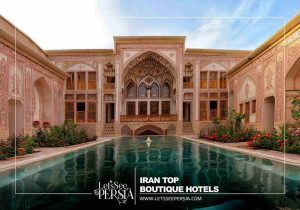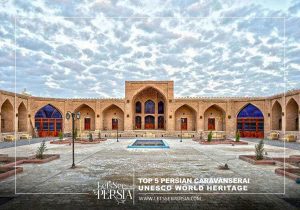Persian Gardens
Persian Gardens is an Iran travel blog that presents a list of the top Persian Gardens in Iran. Here, you can find all the information about the top Persian Gardens, like tourist information, location, and photos.

Persian Gardens + Location & Photo
- Iran Travel Blog
- Location: Iran
- UNESCO Site
Tourist information about Persian Gardens
Persian Gardens are the top must-see attraction in Iran. Some are on the list of UNESCO World Heritage Sites in Iran. Shazdeh Garden, Eram Garden, Fin Garden, Abbas Abad Garden, and Dowlat Abad Garden are some of the top Persian Gardens.
Persian Gardens are one of Iran’s most important cultural works, showing how Iranians see the world. They are like a picture of heaven on earth. They are part of Iranian culture and can be seen in the best designs for Persian buildings.
In Iran, royal families and wealthy people lived in big, beautiful homes with great views and many servants. It’s no surprise that Iran is full of beautiful gardens. The fantastic architecture of the gardens, seen as a reflection of Iranian culture, surprises people the most, whether they are foreign tourists or people from Iran.
The Architecture and History of Persian Gardens
Persian gardens differ because they have natural elements, water streams, walls around the gardens, summer houses, or inside halls and chambers, and unique geometric art.
Gardens and green spaces have always been important in Iranian history and culture, as shown by the gardens of the ancient city of Pasargadae, built around 3000 years ago, and the garden of Cyrus the Great, the outline of which can still be seen today.
These gardens’ layout, look, and purpose have changed over time. Between the third and seventh centuries, when the Zoroastrian religion was the most popular, the Sasanian Empire was in power. Flowing water and fruit trees were essential, as shown by the gardens with fountains and ponds.
After the Arabs took over, the ancient Persian idea of Chahar Bagh (four gardens) improved the look of Persian gardens. During the 13th century, when the Mongols took over, they brought ornamental and decorative flower species with them. During the Safavid dynasty in the 17th and 18th centuries, a palace was added to the garden. In other words, living quarters or pavilions were built on the park grounds and became part of the Persian garden.
Because the natural environment in much of Iran wasn’t good, Persian gardens had to be built using four main elements: land, water, plants, and space. These things are both practical and pretty. For example, water is used for irrigation, and waterways, fountains, and ponds add beauty. The pools looked better because of the bright colors and tiles at the bottom.
List of Top 8 Persian Gardens in Iran
Eight of the top gardens have been named the best Persian gardens—and they are on the list of UNESCO World Heritage Sites in Iran—and will be our main focus in this article. Some of them are Shazdeh Garden, the Eram Garden, Chehel Sotun Garden, Fin Garden, Abbas Abad Garden, Dowlat Abad Garden, Pahlavanpour Garden, and Akbariyeh Garden.
1- Shazdeh Mahan Garden Kerman
Shazdeh Mahan Garden in Kerman Province, southeast Iran. The Qajar-era Kerman governor Naserodolleh developed the garden in 1870 A.D. Construction took 11 years.
Shazdeh Garden is a UNESCO World Heritage Site. The entrance stands out. A two-story barrier separates the desert from paradise within. The Ground floor has a sidewalk and hall. Many reception/living areas exist on the second floor.
A large, long courtyard with pools and shade trees greets visitors at the entrance. The garden has a two-story white structure. Shazdeh Garden is a flat Iranian garden on a slope, with numerous stairs from the entrance to the main pavilion. The path’s fountains use pressure and land slope. It is definitely worth visiting.

2- Eram Garden shiraz
In 2011, this must-see Persian garden in Shiraz was added to the UNESCO World Heritage Sites list. Eram Garden in Shiraz is one of the most beautiful gardens in Iran. The garden used to belong to the leader of the Qashqai tribe, but it has been fixed up, changed, and redone many times.
During the Qajar era, the Eram Garden was owned by the Qavam family, a wealthy Shiraz family. The building is three stories tall and has 32 rooms. It has tiles, paintings about Shahnameh and the Qajar wars, and poems by the famous Iranian poet Hafez. It also has many architectural details that are common in Persian Gardens.

3- Chehel Sotun Garden Isfahan
Chehel Sotun comes from the 20 columns in the courtyard’s water pool. Shah Abbas II created this Garden for gatherings and celebrations. A big pool stretches from the front door to the back. During the Safavid era, when Isfahan was the country’s capital, many beautiful buildings like Chehel Sotun were built there.
The pavilion is built in a combination of Persian and Western styles. The front door is a big porch with Plank Trees and Pinewood columns. At the bottom of the four primary cues in the middle of the porch and front of the front door are two lions that look like people.
On the other side of the pavilion, a domed ceiling with many mirrors is visible. From there, people enter a big room with a wooden top with geometric patterns. The complex Iranian architecture and beautiful paintings in the central chamber were used to welcome critical foreign guests. Art lovers can spend hours visiting Chehel Sotun’s paintings, decorations, and other items.

4- Fin Garden Kashan
One of the actual murders in Iran’s history happened in a garden built during the Safavid era. An assassin sent by the Qajar King at the time, Naseredin Shah, killed the Qajar chancellor Amir Kabir in Fin Garden.
Fin Garden is one of the most popular places in Kashan. Almost every part of the garden has design elements typical of Persian gardens.
Water is a big part of how Fin Garden is made. The water comes from the hillside behind it, so it doesn’t need to be pumped. The garden has a complete piping system, which is good. Using clay pipes of different sizes and precise water pressure calculations, Fin Garden has become a natural paradise in the middle of Kashan’s dry land.

5- Dowlat Abad Garden Yazd
Dowlat Abad Garden was built around 1750 AD. Like most Persian gardens, it has a pavilion. It is also made up of two main parts: the inside (called “Andaruni”) and the outside (Biruni). The outer garden, or outer piece, was where meetings and other formal events occurred. The inner garden, or inner portion, was where the kings lived.
Dowlat Abad Garden is also home to the world’s tallest wind tower. Yazd’s wind towers are a symbol of the city’s architecture. These towers were used to keep the building cool. The wind tower gives a beautiful view of the garden from the outside. The delicate design, unique Iranian architecture, and colored glass provide a lovely interior view.


6- Akbarieh Historical Building & Garden Birjand
Akbarieh is a Persian Garden from the Qajar era. It is a two-story building in the province of South Khorasan (east of Iran). Akbarieh Garden has several houses.
The most well-known house is Heshmat Ol-Molk, a two-story house at the eastern end of the garden. The garden was built during the Zandiyeh. The building is a mix of Russian and Iranian-Islamic styles. Mansions are now used as traditional restaurants, libraries, tea houses, and museums.
7- Abbas Abad Garden in Behshahr
One of Shah Abbas Safavid’s pleasure gardens, Abbas Abad Garden, is now one of the most beautiful beaches on the Caspian Sea. It is on the forest slope of Behshahr, 9 km from this city.
This Persian garden is unique because it was built with a completely natural forest background, has a large amount of water, and is on a slope, so it has a view in both directions. Because there is a lot of water in the area and the garden is in the middle, this complex has become an island.
In the middle of the lake was a quadrangle garden that could be reached by boat or a wooden bridge. All of the garden’s parts are built on a flat plate and are the same size and shape. One of the most important and unique ways that clay pipes are used is in the water system in Abbas Abad Garden.


8- Pahlavanpur Garden Yazd
The Pahlavanpur Garden is in the provinces of Yazd and Mehriz.
It is about 5 hectares and was built by a trader named Pahlavanpur during the Qajar era. The “Hasanabad” aqueduct brings water to this garden. The Hasanabad aqueduct does not go directly through any other gardens in the area except this one. Pahlavanpur Garden has buildings like an entrance building, a pavilion building, a Zemestankhaneh (winter house), a Gelin Tower, a carpet weaving and spinning workshop, stables, and storage.
Two and a half floors are in the pavilion building in the middle of the garden. This building is beautiful because the water flows through it. The winter part is also about being cold and spending time in the winter.
Fruit trees like pomegranate, berry, fig, grape, apple, greengage, peach, almond, apricot, persimmon, pear, red plum, walnut, hawthorn, Mohammadi, and purple, boxwood, rose, and Amin al-Dawla screw is among the plants in this garden. This garden is used for both farming and living.

You can add any Persian Gardens that are interesting to visit to your itinerary. Please Get in touch with our tour operators.
- info@letsseepersia.com
- Click Here to Read More Iran Travel Blog



